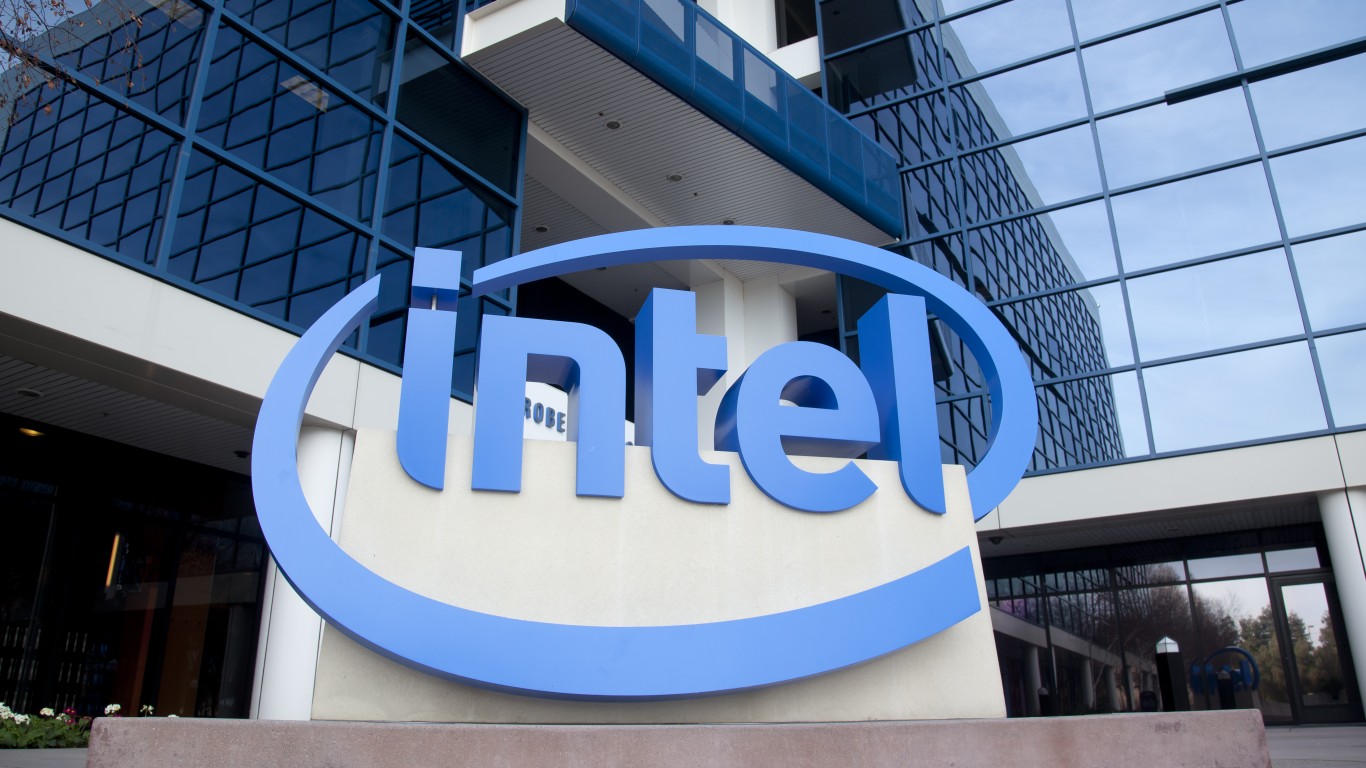
Of the 503 stocks in the S&P 500 (some companies have two classes of stocks that are included) fewer than 30% of them, or 148 stocks, beat the index’s average return of 23.31% in 2024.
24/7 Wall St. Key Points:
- Although the S&P 500 has put together back-to-back years of better than 20% returns, it is mostly the result of just a handful of companies.
- Some 70% of all index stocks underperformed the average, indicating there was no broad-based rally this year.
- The three worst-performers on the market though have been beaten down so much, investors may be hoping for a big rebound in 2025.
- If you’re looking for some stocks with huge potential, make sure to grab a free copy of our brand-new “The Next NVIDIA” report. It features a software stock we’re confident has 10X potential.
Yet because the benchmark index is capitalization-weighted, larger companies have a bigger influence on its performance. That means stocks like Apple (NASDAQ:AAPL) and Nvidia (NASDAQ:NVDA), which are valued at $3.4 trillion and $3.2 trillion, respectively, have more say in how the S&P 500 does in any one year.
Last year, Apple returned 30% while Nvidia nearly tripled, rising 171% for the period. While that was good enough for third-best index performance, it means the artificial intelligence chipmaker was responsible for about one-third of the S&P 500’s return last year.
With around 70% of all stocks underperforming the average, it wasn’t as remarkable a year as many thought. This was not the broad-based rally it seemed.
Below are the three worst members of the S&P 500. Will 2025 be their time to bounce back from the depths? Let’s dig in to find out.
Moderna (MRNA)

Arguably best known as the maker of second-most widely administered Covid therapeutic called Spikevax, Moderna (NASDAQ:MRNA) has had a rough time since the end of the pandemic. Since its peak in late 2021, the biotech stock has lost 90% of its value. It was down 58% in 2024 as sales slid 44% over the first three quarters to $2.2 billion, though it was able to cut its losses in half to $2.4 billion.
Because almost all of its sales are still reliant on Spikevax, there seems little chance Moderna will be able to appreciably grow. It has introduced a vaccine for respiratory syncytial virus (RSV), but it was slow out of the gate and only generated $10 million in third-quarter sales.
Although Moderna has a number of irons in the fire, it combined seasonal flu/Covid shot that has seen positive Phase 3 trial results so far may be its best hope for remaining relevant. With the stock trading near its 52-week low, it’s possible 2025 could be a better year for the biotech. Just don’t expect it to attain the previous heights it once scaled.
Intel (INTC)

The second ne’er-do-well stock on the S&P 500 is chipmaker Intel (NASDAQ:INTC), whose stock cratered 60% last year as it suffered from issues with product stability, particularly with its 13th and 14th Gen CPUs, leading to customer dissatisfaction and legal disputes. It suffered severe losses that forced the tech giant to suspend its dividend to save money.
Additionally, Intel announced massive layoffs, cutting 15% of its workforce, or 15,000 jobs, in a bid to save $10 billion by next year. Its CEO Pat Gelsinger subsequently resigned last month, with reports suggesting he was given a resign or be fired ultimatum.
Despite these setbacks, Intel’s recovery strategy for 2025 and beyond focuses on several fronts: enhancing its process technology with the Intel 18A node, strengthening its foundry business, and capitalizing on the AI and automotive sectors. A new CEO could bring a fresh perspective. The chipmaker also plans to leverage government incentives like the CHIPS Act to bolster domestic manufacturing, hoping these initiatives will steer the company back to technological leadership and financial health.
Yet Intel is late to the game on several fronts and needs to prove its foundry business can be the world-class operation promised. While it still has a leadership position in PCs, the chipmaker is facing increasingly stiff competition, just as it has for decades in that space.
Also trading near its yearly lowpoint, if Intel can simply not stumble again this year, that alone could be a catalyst for increased value, though full recovery still seems years away.
Walgreens Boots Alliance (WBA)

The worst-performing stock in the S&P 500 is pharmacy chain Walgreens Boots Alliance (NASDAQ:WBA), which lost almost two-thirds of its value last year. The stock, though, has been on a long slide lower for the past five years, but 2024 really accelerated the decline as it kicked off the new year by hacking its dividend in half.
Nor was it helped when later in the year it took a massive $5.8 billion writedown of its misguided investment in Village MD, its attempt to expand into primary, specialty care, and urgent care. Walgreens will also be shuttering 1,200 stores, or 14% of its store count, over the next three years with most of them coming in 2025.
The pharmacy chain has proved a horrible steward of shareholder value and despite stated plans to invest in “capital efficient growth areas,” it hasn’t clearly said what those are. Its history has not been encouraging and investors should not be lured in by Walgreens’ dividend, which currently yields 12.9% annually. It is still a dysfunctional company with no clear path forward.
Are You Still Paying With a Debit Card?
The average American spends $17,274 on debit cards a year, and it’s a HUGE mistake. First, debit cards don’t have the same fraud protections as credit cards. Once your money is gone, it’s gone. But more importantly you can actually get something back from this spending every time you swipe.
Issuers are handing out wild bonuses right now. With some you can earn up to 5% back on every purchase. That’s like getting a 5% discount on everything you buy!
Our top pick is kind of hard to imagine. Not only does it pay up to 5% back, it also includes a $200 cash back reward in the first six months, a 0% intro APR, and…. $0 annual fee. It’s quite literally free money for any one that uses a card regularly. Click here to learn more!
Flywheel Publishing has partnered with CardRatings to provide coverage of credit card products. Flywheel Publishing and CardRatings may receive a commission from card issuers.
Thank you for reading! Have some feedback for us?
Contact the 24/7 Wall St. editorial team.





